Knight’s Oak Armour Chest – 15th Century – High Middle Ages – Périgord – [ME148]
AUX-ROIS-LOUIS’S TREASURES FILMING AT CHÂTEAU DE BIRON IN PÉRIGORD FOR THE SERIES ‘FORTUNE DE FRANCE’ Adapted from Robert Merle’s literary fresco, a writer native to Sarlat, the “Fortune de France” series directed by Christopher Thomson took up residence at Château de Biron, seat of one of the oldest baronies in Périgord, in spring 2023. It…

![Knight’s Oak Armour Chest – 15th Century – High Middle Ages – Périgord – [ME148] Impressive in size, this oak chest comes from a fortress in Périgord. It remains a testament to its past grandeur. Its mission was, in its time, to welcome back from battles the weapons and armour of the Knight Master of the house. It is rare to be able to observe this type of castle furniture, as very few of its comrades-in-arms were produced and most have now disappeared.](https://www.aux-rois-louis.com/wp-content/uploads/2024/04/ME148_P1680364-600x600.webp)

![Studded Travel Trunk – 18th Century – China – [ME126] This studded travel trunk originates from the mountainous region of Hubei, also known as the Province of a Thousand Lakes, situated in central China. The ochre and green hues that surface are original. Upon closer inspection of the facade, vertical inscriptions in Chinese characters can be discerned. The rings are loops for the ropes that allowed this travel trunk to be carried through the rugged mountains of Hubei, either by man or mule. The studded iron fittings reinforcing its corners enabled it to withstand shocks and reach us in a beautiful state of preservation.](https://www.aux-rois-louis.com/wp-content/uploads/2024/02/ME126_P1680293-600x600.webp)
![Monoxyl Poplar Barrel – 19th Century – South West – [MP055] This type of barrel was dedicated to storing and maturing brandy produced on the estate, often from prunes in the South West. Its particularity lies in being monoxyl, meaning it was carved from a single trunk of poplar. This trunk was still green, allowing the two rounded bottoms, put in place during fabrication, to be completely trapped in the groove as the wood naturally dried. An ingenious process ensuring the barrel's watertightness and preserving its precious beverage.](https://www.aux-rois-louis.com/wp-content/uploads/2024/02/MP055_P1680234-600x600.webp)
![Polychrome Walnut Virgin with Serpent – 18th Century – Midi-Pyrénées – [ME116] Polychrome Walnut Virgin with Serpent – 18th Century – Midi-Pyrénées – [ME116]](https://www.aux-rois-louis.com/wp-content/uploads/2023/10/ME116_P1670078-600x600.webp)
![Bronze chandelier – Louis XIV – 17th century – Quercy – [ME117] What characterizes this bronze chandelier from the 17th century is that it has never been converted to electricity. Everything here is original, and only the candles are adapted to its candle holders. Additionally, small vessels are intended to receive walnut oil and wicks to complete the decidedly intimate lighting setup.](https://www.aux-rois-louis.com/wp-content/uploads/2023/11/ME117_P1670115-600x600.webp)
![Oak and Embossed Leather Armchair – Louis XIII – 17th Century – Aquitaine – [ME128] The sturdy structure of this Louis XIII armchair is softened by bead turnings that adorn the armrests, armrest supports, and base. The backrest and seat are upholstered in embossed leather known as "Cordovan," revealing lush patterns of birds, leaves, and fruits.](https://www.aux-rois-louis.com/wp-content/uploads/2024/01/ME128_P1680308-600x600.webp)

![Larch wood table for cracking walnuts (énoisage) – 19th century – Haute-Loire – [MP051]] This authentic "paysan" rural piece of furniture, from around the foothills of Velay, is a testimony of the spirit of friendly mutual assistance among neighbours who went to one another's homes to do the "énoisage" all together during the late evening "velhada", sometimes improvising friendly little dances to the sound of clogs, "cabrettes" and accordions.](https://www.aux-rois-louis.com/wp-content/uploads/2023/10/MP051_P1670111-600x600.webp)
![Royal Cast Iron Fireplace Plate – 17th Century – Périgord – [ME113] Impressively sized, this fireplace plate from the renowned foundries of Périgord showcases traditional royal heraldry, featuring a crown surrounded by fleur-de-lis and pine cones, symbolizing longevity. Cast in 1644, the inclusion of this date in its design adds to its historical appeal and authenticity.](https://www.aux-rois-louis.com/wp-content/uploads/2023/09/ME113_plaque_de_cheminee-600x600.webp)
![Cherry Wood Salon Table – Louis XIV – 18th Century – South West – [ME112] Here is a small cherry wood salon table commissioned by a castle in Périgord in the 18th century. It follows the codes of the Louis XIV style, featuring a moulded balustrade base connected by an H-shaped stretcher and blackened mouldings on the side rails. It has a drawer that spans its entire width.](https://www.aux-rois-louis.com/wp-content/uploads/2023/09/ME112_654-600x600.webp)
![Copper Church Steeple Rooster – 19th Century – Languedoc-Roussillon – [MP050] It is believed to have the power to chase away demons, and that's why Pope Leo IV chose it in the 9th century to reign on the steeples of our churches. Very rare, this all-copper church steeple rooster has descended for a while, ready to come protect your home.](https://www.aux-rois-louis.com/wp-content/uploads/2023/09/MP050_P1670068-600x600.webp)
![Fireplace Bench in Oak and Chestnut – 19th century – Auvergne – [MP049] This bench, made with oak and chestnut planks, was originally placed inside an Auvergne "cantou." This large fireplace, which welcomed it due to its depth, gave it a crucial role: to welcome the brave, cold-stricken peasants to warm up and to chat or dance during the evenings around the fire. In short, this famous "cantou" was the stage for the only moments of respite and comfort in courageous lives of labor, throughout the seasons.](https://www.aux-rois-louis.com/wp-content/uploads/2023/09/MP049_660-600x600.webp)
![Musketeer and Elegant Lady – Oil on Canvas – 19th Century – [ME122] Here is a small oil painting on canvas of great finesse. It depicts a delicate gallant scene where a Musketeer, with an Elegant Lady on his arm, manages to have a bird perch on his hand. The characters seem bathed in light in a forest setting that, by contrast, seems to slide into the fallen night.](https://www.aux-rois-louis.com/wp-content/uploads/2023/11/ME122_P1670172-600x600.webp)
![Oak Dining Table – Louis XIII – 17th Century – Corrèze – [ME107] This Louis XIII oak dining table comes from the Château de Turenne in Corrèze. In the 17th century, comfortable furniture was a privilege reserved for the nobility. While household staff dined standing at a high serving table, the masters of the house and their guests could comfortably sit around this well-proportioned table.](https://www.aux-rois-louis.com/wp-content/uploads/2023/11/ME107_P1660609-600x600.webp)
![Little Gilded Wooden Mirror – Louis XIV – 18th century – Midi Pyrénées – [ME 110] This little Louis XIV gilded mirror illustrates the savoir-faire of 18th century miroitiers, guillocheurs, stuqueur and gold leaf gilder. It will bring happiness in a secret boudoir where it will have the place of honor.](https://www.aux-rois-louis.com/wp-content/uploads/2023/12/ME110_P1660637-600x600.webp)
![Inseparable salt and flour boxes in walnut - 18th century - Provence - [MP025]](https://www.aux-rois-louis.com/wp-content/uploads/2021/11/MP025_153x900-600x600.jpg)
![Grand Repoussé Brass Mirror – 19th Century – France – [ME106] Beveled mirror, triple frame adorned with small flowers, acanthus leaves at each corner, and a frontispiece featuring cornucopias surmounting an antique bowl – these are the decorative elements of this large embossed brass mirror inspired by the style of Louis XIV.](https://www.aux-rois-louis.com/wp-content/uploads/2023/08/ME106_P1660604-600x600.webp)
![Light Oak Medallion Chest – 18th Century – The Vosges – [MP041] Here is a light oak chest dating back to the 18th century. Its imposing central medallion encompasses the top and bottom crossbars. It is surrounded by two panels adorned with flowers. The heartwood oak planks from the Vosges forests chosen to make it have endured four centuries without the slightest damage. This wedding chest is simply resplendent.](https://www.aux-rois-louis.com/wp-content/uploads/2023/08/MP041_P1660542-600x600.webp)
![Floral Cherrywood Buffet – Louis XV – 18th Century – Rhone Valley – [MP044] This floral cherrywood buffet, crafted in the 18th century in the Rhone Valley, celebrates the Louis XV style in a most graceful manner. We refer to it as 'floral' due to the unusual abundance of floral motifs adorning each door and every drawer, creating a mirror-like effect.](https://www.aux-rois-louis.com/wp-content/uploads/2023/08/MP044_P1660577-600x600.webp)
![Gilded Wooden Rococo Mirror – Louis XV – 18th Century – Provence – [ME111] Curves, volutes, and Saint-Jacques shells – everything exudes the essence of Provence and the pure Louis XV style in this gilded wooden rococo mirror, resting upon two elegant feet. It dates back to the 18th century and has reached us in a remarkably preserved condition. Its mercury glass and wooden frame adorned with gold leaf gilding in the Armenian style are original.](https://www.aux-rois-louis.com/wp-content/uploads/2023/07/ME111_P1660642-600x600.webp)
![Natural Oak End-of-Bed Chest – 18th Century – South West – [MP046] Offered as part of the bride's dowry by her father, this natural oak chest adorned with tulips and a country bouquet served two purposes in the 18th century: to hold the personal effects of the young bride and to allow the couple to sit at the foot of their bed in complete intimacy. Hence its name "end-of-bed chest."](https://www.aux-rois-louis.com/wp-content/uploads/2023/06/MP046_589c-600x600.webp)
![Wedding Chest in Larch Wood – 18th Century – Haute-Loire – [MP048] Voici un authentique meuble auvergnat, témoignage de l’art populaire tel qu’il Here is an authentic Auvergne piece of furniture, a testament to the folk art as it manifested itself in the 18th century in the southeastern part of the Massif Central. This is a wedding chest assembled with thick larch wood planks, adorned with naive ornamentation inspired by the stylistic repertoires of Louis XIII and Louis XIV.](https://www.aux-rois-louis.com/wp-content/uploads/2023/07/MP048_P1660628-600x600.webp)
![Bell Bronze Pie Dish – 19th Century – Southwest – [MP043] Here is a pie dish that has the particularity of being cast right after a church bell, in order not to waste any of the molten metal. Therefore, it is made of the same bronze and can be considered the little sister of a bell, just a few minutes apart, though not an exact twin.](https://www.aux-rois-louis.com/wp-content/uploads/2023/06/MP043_570-600x600.webp)
![Two Twisted Walnut Columns – 18th Century – Midi-Pyrénées – [ME105] Here are two impressive twisted walnut columns from the 18th century. Initially, they adorned the base of the monumental staircase in a public building located in the Midi-Pyrénées region. Now, they are prepared to enhance the charm of a film set or a private residence.](https://www.aux-rois-louis.com/wp-content/uploads/2023/07/ME105_P1660601x1200-600x600.jpg)

![‘Le saut de l’Ange’ – Oil on canvas – 18th century – Italy – [ME102] ‘Le saut de l’Ange’ – Oil on canvas – 18th century – Italy – [ME102] – This oil on canvas painting from 18th century Italy, titled "Le saut de l'Ange," is associated with Baroque aesthetics. The painter plays with the effects of light and contrasts of chiaroscuro. The depth is not solely based on rigorous geometric perspectives and straight lines. The impression of movement is conveyed through the very expressive gestures of the characters, communicating through their gaze. This painting shows us the efforts of a love-stricken suitor to seduce his beloved and the probable fall of a figure in the background, near a precipice. Can falling in love lead to falling from a great height? This seems to be the allegorical question that the artist is asking us.](https://www.aux-rois-louis.com/wp-content/uploads/2023/02/ME102_P1660563-600x600.webp)
![Louis XVI cherrywood jump chest from the 18th century – South West of France – [ME086] This Louis XVI chest of drawers is referred to as a "jump chest" due to its unusual height of its feet. Originating from the Provinces located in the South West region of the Kingdom of France, Guyenne and Gascony, this unique, sturdy and refined piece was made in the 18th century from thick cherrywood boards.](https://www.aux-rois-louis.com/wp-content/uploads/2023/01/ME086_P1660303-600x600.webp)
![Louis XIII Manor Table in Oak – 17th century – Corrèze – [ME091] Louis XIII Manor Table in Oak – 17th century – Corrèze – [ME091]](https://www.aux-rois-louis.com/wp-content/uploads/2022/12/ME091_485-600x600.webp)
![Louis XIII style walnut reception table – 19th century – Périgord – [ME092] Louis XIII style walnut reception table – 19th century – Périgord – [ME092]](https://www.aux-rois-louis.com/wp-content/uploads/2022/12/ME092_491-600x600.webp)
![Oak Farm Table – 18th century – Auvergne – [MP040] The cat bar on this Auvergne farmhouse table is notoriously raised and plush.](https://www.aux-rois-louis.com/wp-content/uploads/2022/12/MP040_501-600x600.webp)
![Two inseparable walnut armed chairs – Louis XIII – Quercy – [ME089] Examples of seats considered comfortable under Louis XIII, here are two armed chairs with almost straight backrests whose softness lies rather in the way of the armrests, finished in a butt, and the turning, in the Renaissance spirit, of the uprights connecting backrests and armrests at the base.](https://www.aux-rois-louis.com/wp-content/uploads/2022/12/ME089_448C-600x600.webp)

![Walnut drop-leaf writing desk – 18th century – Périgord – [ME090] Drop-leaf secretary made in Périgord in the 18th century in beautiful walnut boards. It is composed of a crossbow chest of drawers with two large drawers, surmounted by a sloping flap that opens to become a writing desk.](https://www.aux-rois-louis.com/wp-content/uploads/2022/12/ME090_P1660457b-600x600.webp)
![Walnut community table – 19th century – South West of France – [ME088] Large walnut community table from a monastery in the South West of France. It is three meters long and can easily accommodate a dozen guests.](https://www.aux-rois-louis.com/wp-content/uploads/2022/12/ME088_P1660439-600x600.webp)
![Kettle, pie dish and decaliter jug in red copper – 18ᵉ century – South West – [MP035] [MP036] [MP037] Three copper containers of exceptional size: an enormous kettle, the matching pie dish and an equally imposing pitcher. All are in red copper and date from the 18th century, a period during which they were manufactured using the same processes in the South West of France.](https://www.aux-rois-louis.com/wp-content/uploads/2022/10/ME035-036-037_426-600x600.webp)
![Chest of Maison Forte in blond walnut – 17th century – Périgord – [ME078] Chest in blond walnut from the 17th century, from a Maison Forte du Périgord. It is decorated with a succession of eight projecting double tables or "chocolate plates", a typical Louis XIII motif. These motifs carved in the mass are two in number on each side and four on the front.](https://www.aux-rois-louis.com/wp-content/uploads/2022/09/ME078_P1660152-600x600.webp)
![Country chest of drawers in cherry wood – 18ᵗʰ century – Périgord – [ME080] Chest of drawers in cherry wood with four drawers on its curved front, two large at the bottom and two smaller at the top placed side by side. It was made in Périgord in the 18th century in thick cherry boards and rests on two scrolled legs at the front and two straight legs at the back.](https://www.aux-rois-louis.com/wp-content/uploads/2022/09/ME080_P1660186-600x600.webp)
![Chest of Knight in walnut – 18ᵗʰ century – Périgord – [ME081] Large walnut chest with straight lines ordered and shaped in the County of Périgord in the 18th century. This geographical origin is attested by a typically Périgord motif of an inverted V which houses the keyhole. The ironwork, lock, hinges and handles are all original.](https://www.aux-rois-louis.com/wp-content/uploads/2022/08/ME081_253-600x600.webp)
![Small two-piece walnut sideboard – 18ᵗʰ century – South West France – [ME073] Small two-piece sideboard made in the 18th century in the South West of France. It has a cornice, a picture rail and two largely molded drawers, four doors decorated with diamond points and it rests on two straight feet at the back and two onion feet at the front.](https://www.aux-rois-louis.com/wp-content/uploads/2022/08/ME073_P1660102n-600x600.webp)
![Walnut bonnetière – Louis XIV – 17ᵗʰ century – Périgord – [ME082] Walnut bonnetière – Louis XIV – 17ᵗʰ century – Périgord – [ME082]](https://www.aux-rois-louis.com/wp-content/uploads/2022/08/ME082_P1660256-600x600.webp)
![Oak farm table – 18ᵗʰ century – Cantal – [MP031] Oak farm table – 18ᵗʰ century – Cantal – [MP031]](https://www.aux-rois-louis.com/wp-content/uploads/2022/08/MP031_093-600x600.webp)
![Winemaker’s table in oak and poplar – 19ᵗʰ century – Champagne – [MP034] Winemaker's table in oak and poplar – 19ᵗʰ century – Champagne – [MP034]](https://www.aux-rois-louis.com/wp-content/uploads/2022/07/MP034_P1660234-600x600.webp)
![Louis XV Mirror Gilded Wood Louis XV mirror – gilded wood – 18ᵗʰ century – South West – [ME085]](https://www.aux-rois-louis.com/wp-content/uploads/2022/06/ME085_P1660289-600x600.webp)
![Large Louis XV mirror gilded wood frame Large Louis XV mirror – gilded wood – late 18ᵗʰ century – Midi-Pyrénées – [ME084]](https://www.aux-rois-louis.com/wp-content/uploads/2022/06/ME084_P1660282-600x600.webp)
![Louis XV mirror with giltwood frame Louis XV mirror – giltwood frame – late 18ᵗʰ century – South of France – [ME083]](https://www.aux-rois-louis.com/wp-content/uploads/2022/06/ME083_P1660268-600x600.webp)
![Desk table in oak and chestnut – Louis XIII – 17th century – Quercy – [ME074] This desk table was probably the prerogative of a high dignitary of the Customs corps, in charge of a flourishing trading post located on the banks of the Olt, the former name of the Lot.](https://www.aux-rois-louis.com/wp-content/uploads/2022/06/ME074_116-600x600.jpg)
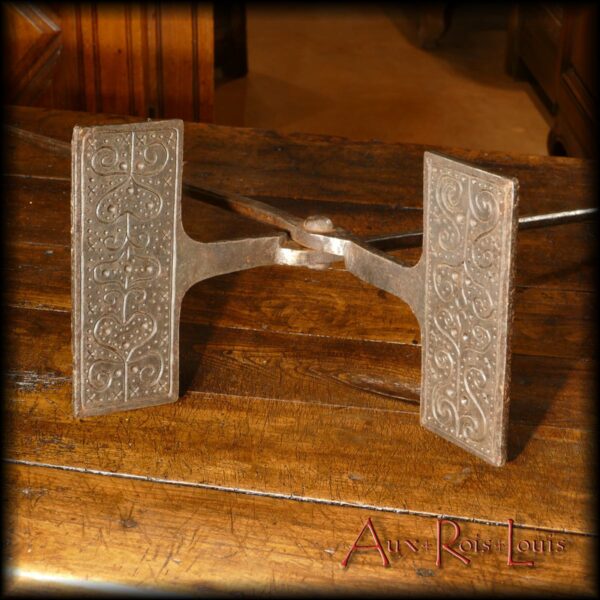
![Small vat in cast iron for the soup Small vat for the soup in cast iron – 17ᵗʰ century – Fonderies du Périgord – [ME077]](https://www.aux-rois-louis.com/wp-content/uploads/2022/05/ME077_P1660136-600x600.jpg)
![Large cast iron vat for laundry Large cast iron vat for laundry – 16ᵗʰ century – Fonderies du Périgord – [ME076]](https://www.aux-rois-louis.com/wp-content/uploads/2022/05/ME076_P1660128-600x600.jpg)
![Sugar boiler for the Colonies – 16ᵗʰ century – Fonderies du Périgord – [ME075] Sugar boiler for the Colonies – 16ᵗʰ century – Fonderies du Périgord – [ME075]](https://www.aux-rois-louis.com/wp-content/uploads/2022/05/ME075_135-600x600.jpg)
![ME079_P1660184det Cast iron fireback – Louis XV – 18ᵗʰ century – South-West – [ME079]](https://www.aux-rois-louis.com/wp-content/uploads/2022/04/ME079_P1660184det-600x600.jpg)
![Walnut sideboard – 18ᵗʰ century – South-West – [MP030]](https://www.aux-rois-louis.com/wp-content/uploads/2022/04/MP030_740-600x600.jpg)
![Louis XIII credenza in walnut – 17ᵗʰ century – South-West – [ME071]](https://www.aux-rois-louis.com/wp-content/uploads/2022/03/ME071_P1650727x900-600x600.jpg)
![Oak wedding chest – 18th century – Auvergne – [MP028]](https://www.aux-rois-louis.com/wp-content/uploads/2022/03/MP028_705x900-600x600.jpg)
![Salt chest armchair – chestnut - cherry - poplar – 19th century – Quercy – [MP029]](https://www.aux-rois-louis.com/wp-content/uploads/2022/03/MP029_733-600x600.jpg)

![Folk art chestnut chest – 18th century – Béarn – [MP027]](https://www.aux-rois-louis.com/wp-content/uploads/2022/02/MP027_689x800-600x600.jpg)
![Sideboard chest – Louis XV – 18ᵗʰ century – South West France - [ME070]](https://www.aux-rois-louis.com/wp-content/uploads/2021/12/ME070_P1650586x900-600x600.jpg)
![Small walnut sideboard – Louis XIV – 17ᵗʰ century – Périgord – [ME069]](https://www.aux-rois-louis.com/wp-content/uploads/2021/12/ME069_P1650574x900-600x600.jpg)
![Apothecary mortar in marble - late 18th century - France - [ME068]](https://www.aux-rois-louis.com/wp-content/uploads/2021/12/ME068_P1650572x900-600x600.jpg)
![Cherry wood farm table – 19th century – Périgord – [MP024]](https://www.aux-rois-louis.com/wp-content/uploads/2021/11/MP024_125x900-600x600.jpg)
![Walnut storage cabinet – 18ᵗʰ century – France – [ME066]](https://www.aux-rois-louis.com/wp-content/uploads/2021/11/ME066_P1650134x900-600x600.jpg)
![Walnut pantry cabinet - 19th century - Provence - [MP026]](https://www.aux-rois-louis.com/wp-content/uploads/2021/11/MP026_P1650178x900-600x600.jpg)
![Walnut sideboard with scallop shell – Louis XV – 18th century – Lot Valley – [ME067]](https://www.aux-rois-louis.com/wp-content/uploads/2021/11/ME067_144-600x600.jpg)

![Jam cabinet in cheery – late 18th century – Périgord – [MP023]](https://www.aux-rois-louis.com/wp-content/uploads/2021/11/MP023_084x900-600x600.jpg)

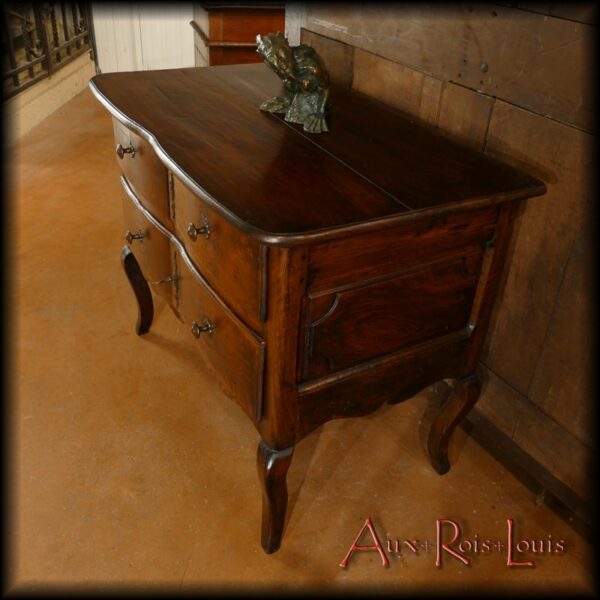
![Half-chest of drawers in cherry wood – 18th century – South West – [ME059]](https://www.aux-rois-louis.com/wp-content/uploads/2021/10/ME059_P1600975-600x600.jpg)
![Cast iron andirons - 18th century - Périgord - [ME062]](https://www.aux-rois-louis.com/wp-content/uploads/2021/09/ME062_013-600x600.jpg)
![ME061_P1610002 Walnut dresser – 17ᵗʰ century – South West France – [ME061]](https://www.aux-rois-louis.com/wp-content/uploads/2021/08/ME061_P1610002-600x600.jpg)
![MP022_P1600984 Beech butcher's block - early 20th century - [MP022]](https://www.aux-rois-louis.com/wp-content/uploads/2021/08/MP022_P1600984-600x600.jpg)


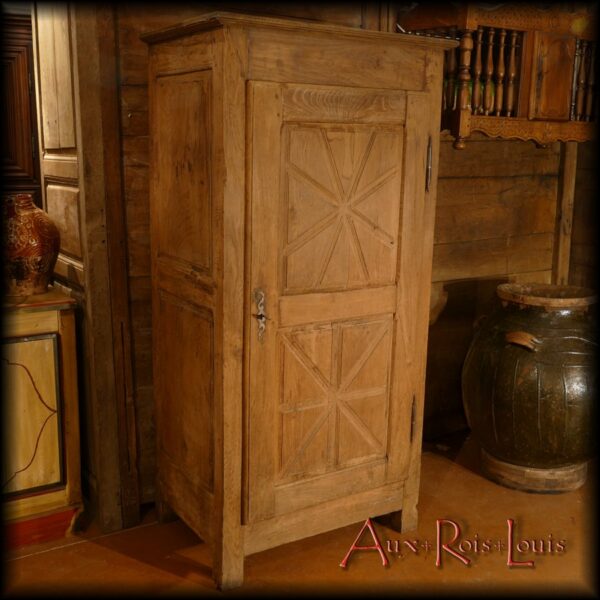



![ME053_P1600527 Office cabinet in walnut - Louis XIII - 17th century - Périgord - [ME053]](https://www.aux-rois-louis.com/wp-content/uploads/2021/04/ME053_P1600527-600x600.jpg)
![MP020_P1600516x900 Louis XV style country sideboard in walnut, oak and elm – 19ᵗʰ century – South West – [MP020]](https://www.aux-rois-louis.com/wp-content/uploads/2021/04/MP020_P1600516x900-600x600.jpg)
![ME052_P1600504 Curved chest of drawers in nuanced blond walnut – 18ᵗʰ century – Périgord - [ME052]](https://www.aux-rois-louis.com/wp-content/uploads/2021/04/ME052_P1600504-600x600.jpg)
![MP019_P1600496 Vaisselier dresser-drainer in cherrywood – 19ᵗʰ century – South West – [MP019]](https://www.aux-rois-louis.com/wp-content/uploads/2021/04/MP019_P1600496-600x600.jpg)
![ME051_P1600475 Renaissance style chest in walnut - 17ᵗʰ century - Périgord - [ME051]](https://www.aux-rois-louis.com/wp-content/uploads/2021/04/ME051_P1600475-600x600.jpg)
![ME050_464 Shrunken two bodies sideboard in walnut - Louis XIII - Périgord - [ME050]](https://www.aux-rois-louis.com/wp-content/uploads/2021/04/ME050_464-600x600.jpg)
![MP018_P1600485 Beech butcher's block – End of 19ᵗʰ century – South West – [MP018]](https://www.aux-rois-louis.com/wp-content/uploads/2021/04/MP018_P1600485-600x600.jpg)
![ME049_P1600325 Mazarin desk in walnut - Louis XIV - South West - [ME049]](https://www.aux-rois-louis.com/wp-content/uploads/2021/02/ME049_P1600325-600x600.jpg)
![ME048_P1600241_800x800 Louis XIII style oak table - 20th century - Périgord - [ME048]](https://www.aux-rois-louis.com/wp-content/uploads/2021/02/ME048_P1600241_800x800-600x600.jpg)
![ME045_P1600266 Louis XVI walnut chest of drawers – Late 18ᵗʰ century – South West – [ME045]](https://www.aux-rois-louis.com/wp-content/uploads/2021/02/ME045_P1600266-600x600.jpg)
![MP015_P1600280 Manka, oak sideboard – 18ᵗʰ century – Basque Country – [MP015]](https://www.aux-rois-louis.com/wp-content/uploads/2021/02/MP015_P1600280-600x600.jpg)
![MP017_P1600257 Oval walnut cellar table – 18ᵗʰ century – Lot – [MP017]](https://www.aux-rois-louis.com/wp-content/uploads/2021/02/MP017_P1600257-600x600.jpg)
![ME047_P1600242 Cherry wood sideboard – Louis XV Regency – 18ᵗʰ century – Aveyron – [ME047]](https://www.aux-rois-louis.com/wp-content/uploads/2021/01/ME047_P1600242-600x600.jpg)
![ME039_P1600103 Louis XVI walnut chest of drawers – Late 18ᵗʰ century – Sud-Ouest – [ME039]](https://www.aux-rois-louis.com/wp-content/uploads/2020/11/ME039_P1600103-600x600.jpg)
![ME044_184 Pantalonnière cupboard in cherry wood – Louis XIV – 18ᵗʰ century – Gironde – [ME044]](https://www.aux-rois-louis.com/wp-content/uploads/2020/11/ME044_184-600x600.jpg)
![ME043_P1600159 Louis XV style “homme-debout” in walnut - 18ᵗʰ century - Périgord - [ME043]](https://www.aux-rois-louis.com/wp-content/uploads/2020/11/ME043_P1600159-600x600.jpg)
![P1600115c800 Mazarin desk in walnut, oak and pear – Louis XIV – 17ᵗʰ century – South-West – [ME040]](https://www.aux-rois-louis.com/wp-content/uploads/2020/10/P1600115c800-600x600.jpg)
![ME038_670 Curved chest of 4 drawers in walnut – 18ᵗʰ century – Rhône Valley [ME038]](https://www.aux-rois-louis.com/wp-content/uploads/2020/09/ME038_670-600x600.jpg)





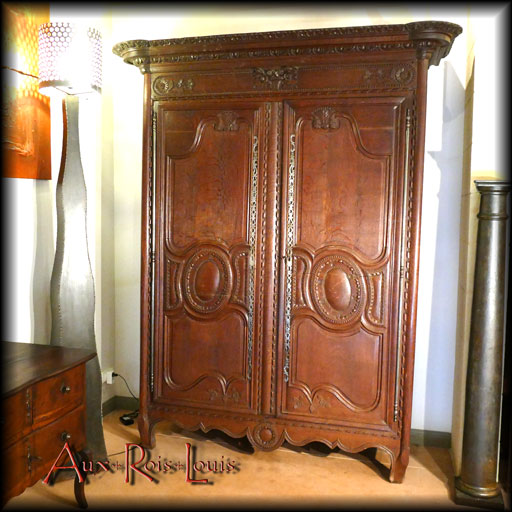
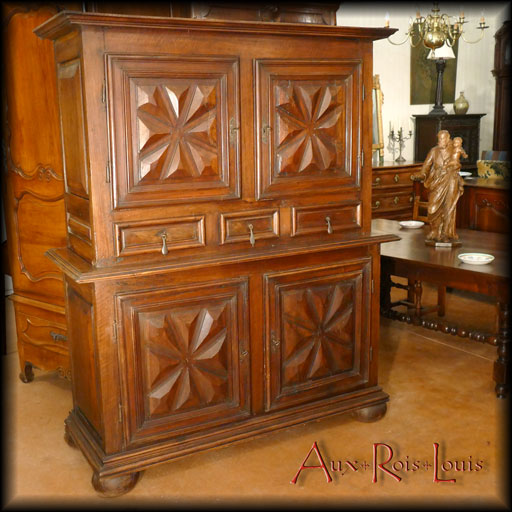
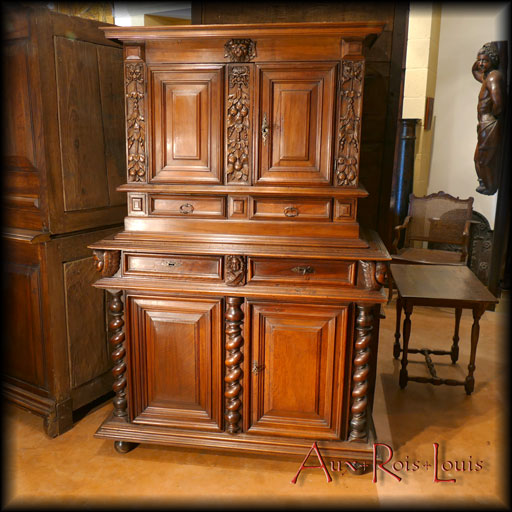
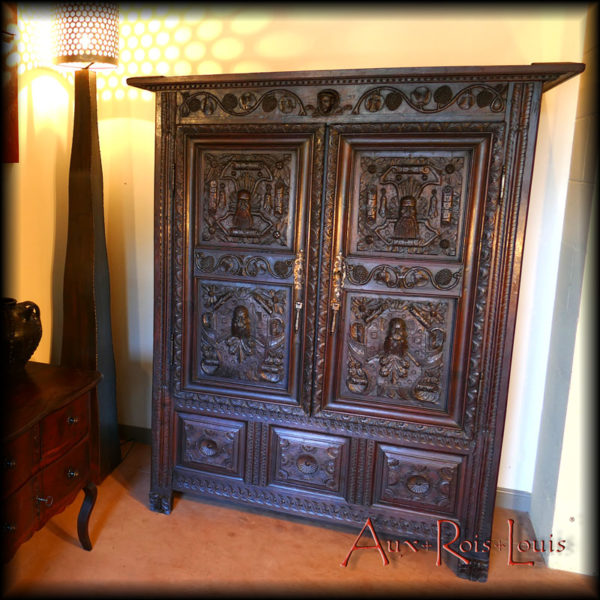
![Walnut wood chest – 18ᵗʰ century – Bordeaux Region Walnut wood chest – 18ᵗʰ century – Bordeaux Region – [ME005]](https://www.aux-rois-louis.com/wp-content/uploads/2022/07/ME005_N04_P1350548_2-600x600.webp)
![Louis XIII kitchen cupboard 17ᵗʰ century – Haute‑Loire Louis XIII kitchen cupboard 17ᵗʰ century – Haute‑Loire – [MP002]](https://www.aux-rois-louis.com/wp-content/uploads/2022/07/N17_P1470819-600x600.webp)

![Louis XIV walnut armoire – late 17ᵗʰ century – Périgord Louis XIV walnut armoire – late 17ᵗʰ century – Périgord – [ME002]](https://www.aux-rois-louis.com/wp-content/uploads/2022/07/ME002_P1500449carrex800-600x600.webp)

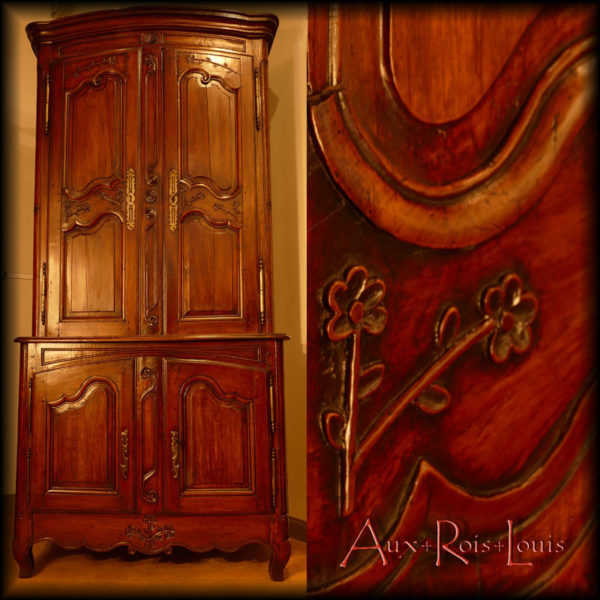


![Walnut coffer – 18ᵗʰ century – Périgord Walnut coffer – 18ᵗʰ century – Périgord – [ME010]](https://www.aux-rois-louis.com/wp-content/uploads/2022/07/ME010_N10_P1500391-600x600.webp)